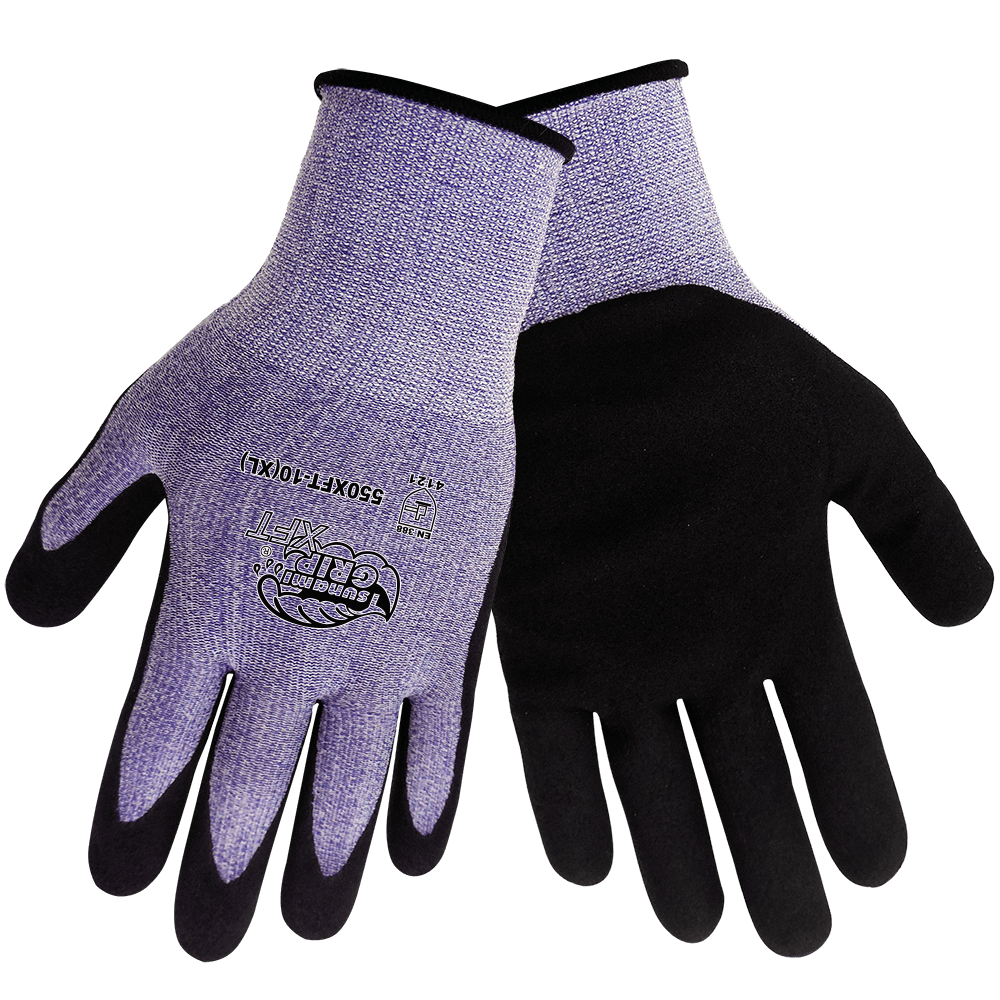There are seemingly countless chemicals out there, so how is it possible to know you’re purchasing a glove that will in fact protect you from the chemicals you’re using? We’ve rounded up some helpful tips and information for you to use next time you’re purchasing coated chemical resistant work gloves.
The first thing you should do is take a look at the environment that you’ll be using these gloves in. Assess the potential hazards that you’ll face and especially take into account the chemicals that you’ll be using on a regular basis. The stronger the chemical, the greater level of protection and thickness you’ll need in your glove. If the chemical hazard is just in the splash zone as opposed to full immersion, that will affect the type of glove you select. If your hands will be immersed in chemicals for any period of time, you’ll need to find a glove that is impenetrable.
On top of mere chemical resistance properties, you’ll need to consider other needs required by yourself and your employees. Coated work gloves have many other features that can contribute to greater protection and ease of use, depending on your situation. Often times it is helpful to purchase gloves with textured fingers or palms so that workers are able to maintain an excellent grip in all conditions. If you’ll be working in extreme temperatures, consider looking for a glove that is insulated to protect from cold or that is heat resistance in the case of working near flames. Pay attention to the thickness of the glove as well. If you’re performing tasks that require use of small tools or parts, it is helpful to employ a glove that is a bit thinner so that you maintain dexterity.
When it comes to actually using the gloves in your work environment, compliance is essential. Always check to make sure that gloves are not ripped or damaged in any way. If they are, it is important to throw them away and replace them with a fresh pair. Also, regularly check chemical permeation times, and make sure that you’re changing out gloves that have been exposed to chemicals for an extended period of time.
There are three main types of glove coating materials, each of which has certain properties lending them to use in different types of environments. Natural rubber latex coatings offer gloves excellent cut and tear resistance as well as super high levels of grip and can withstand a wide range of temperature, although it is not resistant to flames. Latex coated gloves are best used when dealing with alcohols and some ketones, but should not be used with chemicals that have hydrocarbon or any other organic solvents.
Synthetic rubber like chloroprene or nitrile have very high levels of cut and abrasion resistance. Chloroprene is resistant to flames and can withstand temperatures ranging up to 200°F. It does well with chemicals like acids, fats, caustics, ketones, detergents, fertilizers, alcohols, and refrigerants. Nitrile can stand up to a relatively wide range of temperatures and is good to be used with oils, certain types of organic solvents, as well as fuels.
Plastic coatings like polyurethane offers moderate abrasion resistance, and is generally strong. It doesn’t have the best heat resistance and isn’t recommended for use in temperatures above 175°F. It is perfectly suited for situations that require sterility and can withstand chemicals like oils, oxidation and ozone, and some types of organic solvents.
Hopefully this guide has informed you to make a great purchase when it comes to coated chemical resistant work gloves!




